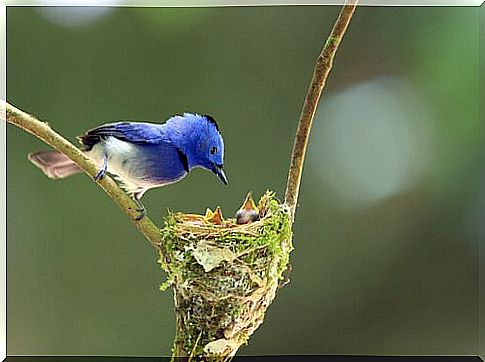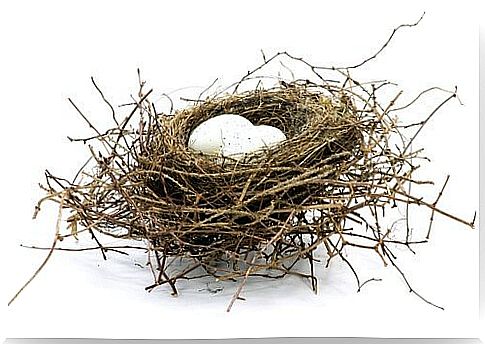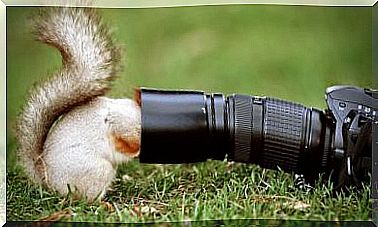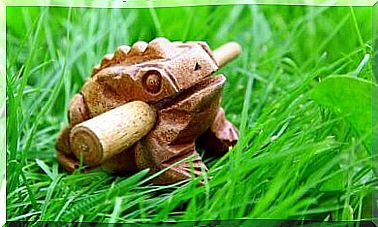Birds Expert At Building Their Nests

The ability to build a nest arouses the curiosity of any bird watcher. Specialized architects in their own homes, birds seem to have been born with this constructive ability.
Apparently, no one tells them where to install the nest or what materials to use; nor do they receive indications as to what format they should have. It appears that these abilities were defined in the genes.
However, research shows that not everything is determined by genetics. Scientists have concluded that the ability of birds to build their nest is also the result of learning.
Each species has its own style and constructive model, which comes from an innate knowledge, but also interferes with an interesting cognitive process.
A fundamental mission for life: build your nest
The nest contributes to the survival of the species. Wise nature dictates that birds build several nests. The more nests they build, the more offspring they have.
In this way, males are dedicated to building nests to attract females. The female arrives at a nest, mates and, after laying, hatches the eggs.
In parallel, the male builds another nest, attracts another female and the process starts again. Many birds are monogamous, and stay with the same pair for life.

Thus, it is guaranteed that if a nest fails because of a predator or due to climatic factors, there will be others in which the chicks will be born.
It is more than proven that, if this were not the case, many bird species would have disappeared from the planet.
Learning is an important factor in nest building
Researchers observed the birds’ behavior as they built their nests. Tests were carried out with controlled parameters in different species.
With the methodology of experimental group and control group, different materials were made available for both groups.
After testing with materials with different properties, all birds chose the ones that were most effective and discarded the others.
The experience allowed them to learn which material worked best in the nest. The choice was not made instinctively, but obeyed different attempts by the animals.
This type of experience complements different observations made in the natural environment, without human intervention.
When a bird builds several nests, it is possible to observe small differences that improve its structure and shape.

Different types of nests
There are birds that do not build nests, but lay their eggs in the natural spaces that shelter them.
Such is the case of the arau and the eagle owl, which shelter their eggs on rocky cliffs. Nor does the penguin build nests: it wraps its eggs in its own skin and incubates them as it roams.
However, most species create their own nests. Each structure depends on how the birds live. The most frequent models are as follows:
- Excavated nests. It is the simplest and least labor intensive construction. The bird makes a small hole in the ground and covers it with branches, leaves, feathers and small stones. The idea is to keep the eggs in place and camouflage them a bit. It is a common type of nest for riparian birds.
- Nests in the ground. Eggs are wrapped in a mass of twigs, sticks and leaves on the ground; this mass rots and generates the heat that will keep the eggs. This is the case with flamingos, for example.
- Nests in cavities. They usually appear in holes in tree trunks or large cacti. The woodpeckers are a good example of the typical inhabitants of these nests.
- Hanging nests. They are constructed in the shape of an elongated bag, woven from flexible plant fibers and herbs; these nests are usually seen suspended from branches. The cacicus and the oriolidae family are diligent weavers of these nests.
- Nests on platforms. They are found in different shapes and materials. These are nests located in trees and power line poles. They come in different shapes, from the near-perfect structure of a clay john to bowl-like structures, to simple and visually confusing structures.
The protection factor
The mimicry with the environment and location in inaccessible places allow the protection of eggs and litter.
Habits that protect chicks from parasites and pathogens are also factors that complement this incredible ability of birds to build their nests.









